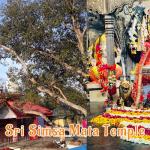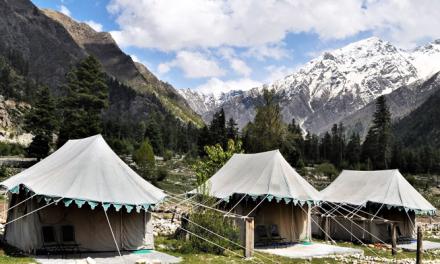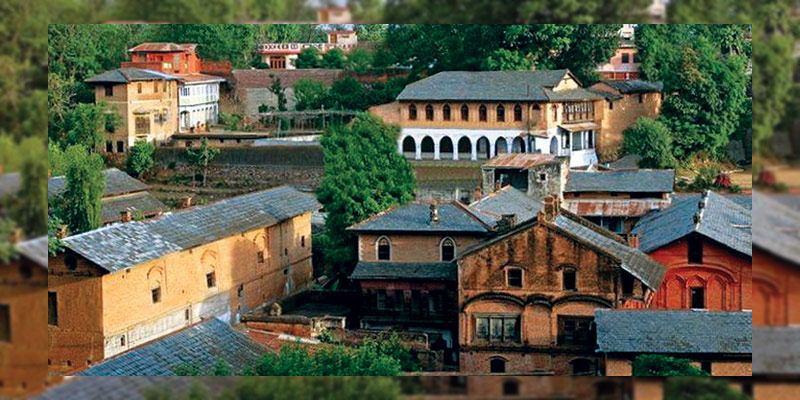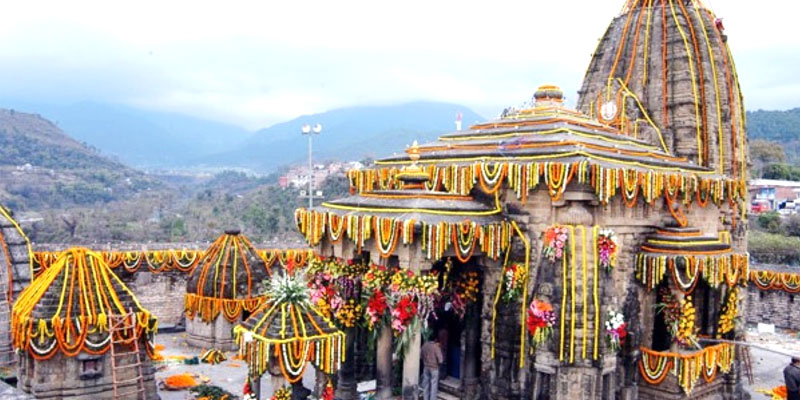
Laxmi Narayan Temple: Chamba’s Timeless Spiritual Gem

Nestled amidst the breathtaking landscapes of Chamba, the Laxmi Narayan Temple stands as a testament to both historical grandeur and architectural brilliance. Erected in the 10th century by Raja Sahil Verman, this sacred sanctuary transcends its role as a mere place of worship, unfolding as a living chronicle weaving together tales of devotion, sacrifice, and resilience.
Architectural Marvels:
The temple complex seamlessly blends artistic finesse with practical ingenuity. The Bimana, defined by its Shikhara and Garbhgriha, serves as the spiritual heart of the temple. Crowned with wooden chattries and a shell roof, the structure stands resilient against the whims of Chamba’s weather, particularly the harsh snowfall during winter.
The wheel-shaped roof, not just an aesthetic marvel but a pragmatic shield against the biting cold, captures the eye. Upon entering the temple, a mandapa-like structure welcomes visitors, setting the stage for an immersive spiritual experience.
The Divine Residents:
At the core of the Laxmi Narayan Temple lies a metallic image of Garuda, the revered mount of Lord Vishnu, infusing a mystical aura. The entire complex, featuring six temples dedicated to Lord Shiva and Vishnu, weaves a spiritual tapestry recounting the rich Hindu mythology.
A Tapestry of Temples:
Beyond the grandeur of the Laxmi Narayan Temple, the complex unfolds with other jewels of religious architecture. The Radha Krishna Temple, constructed by Rani Sarda in 1825, emanates elegance with intricate detailing. The Shiva Temple of Chandragupta, a creation of Sahil Varman, and the Gauri Shankar Temple, a legacy of Yugkar Varman, enrich the spiritual landscape of Chamba.
Guarding the main gate is a majestic Garuda statue, a testament to the valor of Raja Balabhadra Verma. This complex transcends a mere place of worship; it becomes a repository of history, where each temple narrates a unique story of devotion and artistic mastery.
A Triumph Over Adversity:
History recounts a turbulent period when the Mughal emperor Aurangzeb ordered the demolition of the Laxmi Narayan Temple. Undeterred, Raja Chhatra Singh fortified the temple in 1678, adding gilded elevations as an act of defiance against Mughal terror. This transformed the temple into a symbol of resilience, standing tall against the ravages of time.
A Glimpse into the Past:
Delving into the temple’s history reveals a fascinating legend. The idol of Lord Vishnu, carved from rare marble imported from the Vindhyachal Mountains, carries a tale of sacrifice and determination. Raja Sahil Varman’s pursuit of this marble involved the sacrifice of his eight sons, culminating in the hands of his eldest son, Yugkara. Faced with attacks from robbers, Yugkara found salvation in the form of a saint, adding a divine intervention element to the temple’s saga.
Temple Timings:
For those seeking solace or a moment of divine connection, the Laxmi Narayan Temple opens its gates from 6 am to 12.30 pm and reopens from 2.30 pm to 8.30 pm, providing two opportunities each day for devotees to immerse themselves in spiritual contemplation.
In Conclusion
The Laxmi Narayan Temple in Chamba is not merely a destination; it is a pilgrimage into history, art, and spirituality. As you traverse the sacred halls, let the whispers of ancient tales guide you, and as you step out, Chamba unfolds with its own treasures, waiting to be discovered. This is a journey that transcends time, where the past converges with the present, inviting all who venture here to be a part of an enduring legacy.









